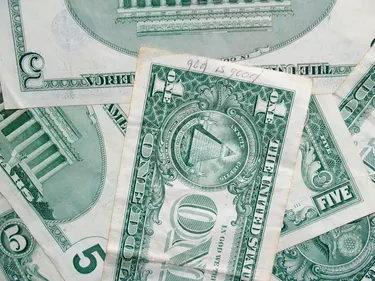When considering your financial goals, you'll likely want to know how long it will take you to grow your money as well as what rate of return you should seek. While many finance formulas exist, the rule of 72 is a popular and simple tool that lets you see how long it takes to double your money when you earn a specific compound interest rate. According to the Mathematical Association of America, Luca Pacioli referenced the rule in his 1494 work called "Summa de Arithmetica," so it has a longstanding history. Take a look at how this rule works and how you can use the formula.
How the Rule of 72 Works
Video of the Day
According to the U.S. Securities and Exchange Commission, the rule of 72 is a simple tool for seeing the power of compounding interest and making investment choices. It allows you to get a rough estimate of how long it will take for your original investment amount to double, and it has applications in many personal finance scenarios. You can use it when there's a fixed interest rate on the invested money, and it assumes annual compounding.
Video of the Day
You can use the rule of 72 formula by dividing 72 by the annual rate of return to see how many years it takes to double your money. However, you can also divide 72 by a target number of years to see the necessary interest rate for doubling your money within the desired time period. Along with doing these calculations by hand, you can find charts with sample growth rates and doubling times, such as the one on the University of Texas at El Paso website.
By using this rule of thumb, you'll see that higher interest rates double the money faster than lower interest rates. In addition, you'll see how saving your money longer yields more desirable results, as you could see your original investment double several times. You'll also be able to quickly consider the potential result of different investment opportunities whether you're saving for retirement, a home or another financial goal.
Example of Finding Doubling Time
To see the power of compound interest and determine the doubling time for an example investment product, consider that you have $10,000 and find a way to get an annual rate of return of 10 percent. Dividing 72 by 10 would show that the amount of time needed for your $10,000 to double would be 7.2 years.
On the other hand, consider that you're planning to charge $2,000 to your credit card and that your creditor charges a 12 percent fixed annual interest rate rather than a more typical variable rate. To see the number of years it would take for your creditor to get double the $2,000 you borrowed, you can divide 72 by 12 to get six years. Therefore, paying off your credit card debt as soon as possible is financially advantageous.
Lastly, you can also use the same technique to see how inflation cuts your money's purchasing power. For example, if the inflation rate stays steady at 4 percent, dividing 72 by 4 gets you 18, meaning your money would be half as valuable in 18 years.
You can use the rule of 72 formula by dividing 72 by the annual rate of return to see how many years it takes to double your money.
Finding Needed Interest Rate
As another example, consider that you're exploring some different investment options, like mutual funds, for the $15,000 you have to invest. You'd like to double your initial investment in 15 years.
Using the rule of 72, you can divide 72 by 15 to see that you'd need a fixed rate of return of 4.8 percent to reach your goal. Knowing this information will make it easier to rule out investment products that won't pay high enough to reach your goal.
Are There Rule of 72 Limitations?
While helpful, the rule of 72 doesn't work for variable interest rates like with traditional savings accounts. It also doesn't suit situations where you earn simple interest rather than get a compound interest rate. In addition, it doesn't consider fees you may incur for a particular investment, which ultimately cut into your actual return.
Stanford University explains that calculating the natural log is a more accurate method if there's continuous compounding versus annual compounding. Using a slightly different numerator such as 69.3 or 70 is another alternative to consider in a continuous compounding situation. In addition, CNBC explains you'll likely find accuracy better with the rule when you're dealing with interest rates between 5 and 12 percent.
Therefore, it's best to use the rule of 72 formula as a way to get a quick estimate rather than a perfectly accurate result.
- U.S. Securities and Exchange Commission: What Is Compound Interest?
- Stanford University: The Rule of 72
- Mathmatical Association of America: Mathematical Treasures - Pacioli's Summa
- University of Texas at El Paso: Rule of 72
- CNBC: Use This Rule to Quickly Find Out When Your Investments Will Double in Value
